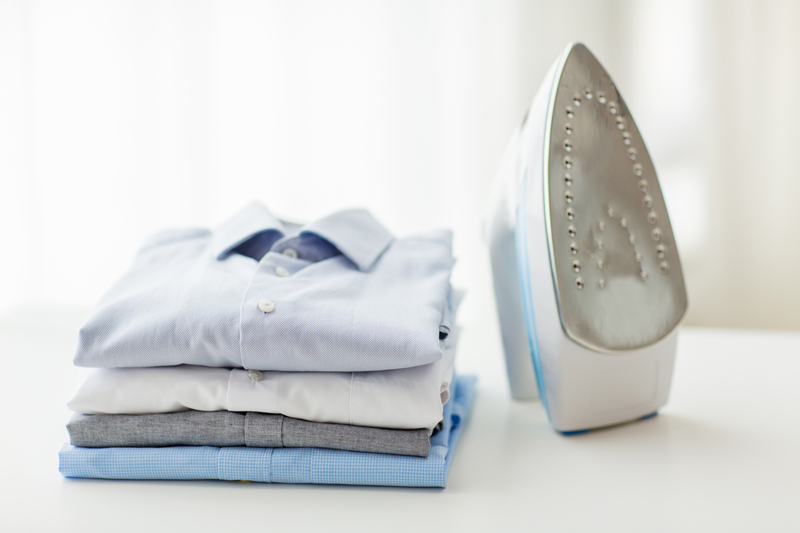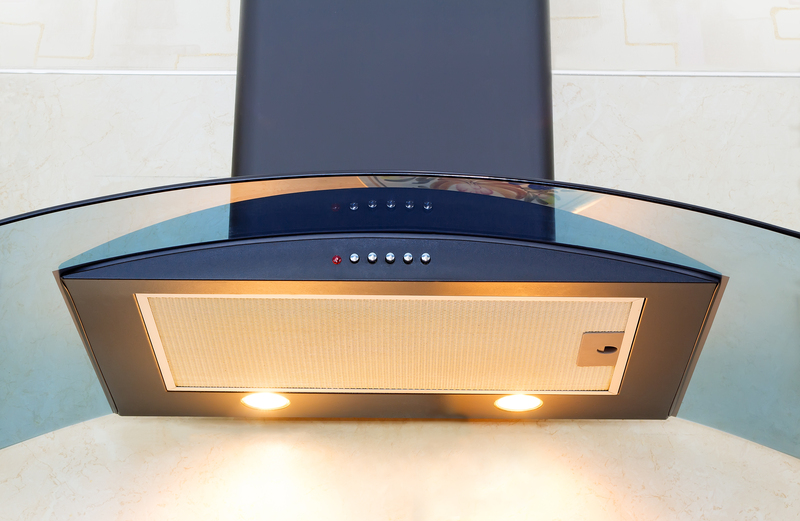Uncover the Best Practices for Jewelry Maintenance
Posted on 20/08/2025
Uncover the Best Practices for Jewelry Maintenance
Jewelry has long been treasured for its beauty, symbolic meaning, and value. Whether inherited as a family heirloom, presented as a romantic gesture, or purchased as a treat to yourself, your precious pieces deserve the utmost care. Uncovering the best practices for jewelry maintenance is essential to preserve their sparkle, value, and significance for generations to come.
Why Jewelry Maintenance Matters
Proper jewelry care does more than just keep pieces looking their best - it prevents irreversible damage, tarnish, and expense down the road. Neglecting regular maintenance can cause gemstones to become loose, diminish shine, and even shorten the lifespan of your cherished items. In this comprehensive guide, you'll discover everything you need to know to ensure your jewelry remains as captivating as the day you acquired it.

Know Your Jewelry: Materials and Types
Understanding the composition of your jewelry collection is the first step in effective maintenance. Each material - whether gold, silver, platinum, pearls, or gemstones - requires unique care techniques. Here are key categories to consider when developing your jewelry cleaning regimen:
- Precious Metals (Gold, Silver, Platinum): These form the backbone of most jewelry pieces and require different cleaning approaches based on their properties.
- Gemstones (Diamonds, Sapphires, Emeralds, etc.): Gemstones can be durable or delicate depending on their mineral hardness and setting.
- Organic Materials (Pearls, Amber, Coral): These materials are softer and more sensitive to chemicals and physical stress.
- Costume Jewelry: These pieces may use plated metals or imitation stones, calling for careful, gentle care to prolong their life.
General Jewelry Maintenance Best Practices
Regardless of the type and value of your items, these essential jewelry maintenance practices apply to all collections:
- Inspect Regularly: Frequently examine your jewelry for loose stones, bent prongs, or worn clasps. Early detection prevents loss or further damage.
- Gently Clean: Use a soft, lint-free cloth to wipe off oils and dirt after each wear. Regular gentle cleaning helps maintain shine and prevent buildup.
- Handle With Care: Avoid tugging, dropping, or exposing your jewelry to unnecessary force. Always remove jewelry before engaging in sports or heavy-duty activities.
- Professional Check-Up: Take your valuable pieces to a trusted jeweler annually for a thorough inspection, cleaning, and necessary repairs.
Best Practices for Cleaning Different Jewelry Types
1. Cleaning Precious Metals
Gold and platinum are resistant to tarnish but may accumulate grime or dullness from daily wear. Silver is more prone to oxidizing and tarnish. Follow these steps for safe cleaning:
- Gold & Platinum: Mix a few drops of mild dish soap in warm water. Soak for 10-15 minutes, then gently scrub with a soft-bristled toothbrush. Rinse and pat dry with a soft cloth.
- Silver: Use a specialized silver polishing cloth for light tarnish, or soak in a solution of baking soda and warm water. Avoid abrasive materials that can scratch the surface.
- Tip: Store silver in anti-tarnish bags or cloths to slow down oxidation.
2. Cleaning Gemstone Jewelry
Gemstone jewelry maintenance requires care not to damage the stone or setting. While diamonds are durable, softer stones like opals or emeralds need extra caution:
- Diamonds & Hard Gemstones: Clean using warm soapy water and a soft toothbrush. Be sure to clean beneath the stone settings, where grime can accumulate.
- Softer Gemstones (Opals, Emeralds, Turquoise): Use only a soft, damp cloth - avoid soaking. Keep away from heat, chemicals, and ultrasound cleaners.
- Avoid: Household cleansers, bleach, or acetone, which can dull or pit gemstones.
3. Caring for Pearls and Organic Jewelry
Pearl jewelry maintenance is especially critical due to their delicate nacre surface:
- Wear Last, Remove First: Cosmetics, hairspray, and perfume can damage pearls, so put them on after finishing your routine and remove them before undressing.
- Wipe Clean: Use a soft, slightly damp cloth to gently wipe pearls after each wear. Avoid submerging in water.
- Store Separately: Pearls are easily scratched, so store them in a fabric pouch or lined box, separate from other jewelry.
- Restring as Needed: For pearl necklaces, have them restrung by a professional every 1-2 years to prevent breakage.
4. Tips for Maintaining Costume Jewelry
Costume jewelry, although more affordable, can rapidly lose its luster and finish if not properly maintained:
- Keep Dry: Remove before showering, swimming, or exercising -- moisture promotes tarnish and breakdown of adhesives.
- Use Mild Cleaning: Gently wipe with a dry, soft cloth. Avoid water or commercial jewelry cleaners, as they may dissolve adhesives.
- Store Properly: Keep costume jewelry in individual compartments or bags to avoid scratching and tangling.
Proper Storage: Safeguard Jewelry From Damage
Effective jewelry storage is a cornerstone of long-lasting brilliance and beauty. Here's how to create an environment that prevents scratches, entanglement, and tarnish:
- Separate Pieces: Store items individually using soft pouches, boxes, or lined compartments.
- Minimize Exposure: Keep away from direct sunlight, heat, and humidity, which may accelerate tarnishing and gemstone fading.
- Use Anti-Tarnish Materials: For silver, consider keeping silica gel packets or anti-tarnish strips nearby.
- Secure Closures: Always fasten clasps before storing to prevent chains from tangling.
- Travel Cautiously: Use dedicated travel cases with padding for trips to protect your jewelry from impact and loss.
Essential Do's and Don'ts of Jewelry Maintenance
Do:
- Remove jewelry before household chores or using harsh chemicals.
- Visit a professional jeweler for repairs, resizing, or deep cleaning.
- Check jewelry insurance for valuable pieces regularly.
- Polish gold and silver with specialized cloths, not paper towels.
Don't:
- Don't sleep in jewelry - it risks causing stress and breakage to delicate designs.
- Don't expose jewelry to lotion, hairspray, or perfume.
- Don't use toothbrushes with hard bristles, which can scratch surfaces.
- Don't store jewelry in direct sunlight or in bathrooms.
Specific Maintenance Tips for Popular Jewelry Types
Maintaining Engagement and Wedding Rings
Because these rings are worn daily, they accumulate soap, lotion, and environmental residues. For brilliant sparkle, clean engagement rings weekly with mild soap and warm water. Avoid harsh chemicals, and have the prongs checked twice a year to ensure the stone is secure.
Taking Care of Watches
Watches have complex mechanisms and sensitive straps. Wipe the case and band after each wear, keep away from magnetism, and have the movement serviced every 2-4 years. Store watches in a cool, dry place and avoid shock or impact.
Caring for Antique and Vintage Jewelry
Antique jewelry may contain soft, fragile materials. Clean gently with a cloth; avoid soaking or brushing. Consult a reputable jeweler for repairs and frequent check-ups. Store antique items flat and cushioned to preserve their historic appeal.
How to Spot When Your Jewelry Needs Professional Intervention
While diligent DIY jewelry maintenance is essential, certain situations require a professional's expertise:
- Loose Stones or Bent Prongs: Only a jeweler can securely reset or repair these issues.
- Severely Tarnished or Damaged Pieces: Significant tarnish may need ultrasonic cleaning or professional polishing.
- Broken Clasps or Chains: Attempting at-home repairs may worsen the issue; always consult a pro.
- Heirloom Restoration: Restoration and preservation of antique jewelry is best left to skilled craftsmen.
Common Jewelry Maintenance Mistakes (and How to Avoid Them)
- Over-Cleaning: Frequent, abrasive cleaning can erode finishes. Clean only as needed with gentle methods.
- Ignoring Settings: Failing to check prongs or fastenings can lead to gemstone loss.
- Improper Storage: Tossing jewelry in a pile leads to scratches and broken pieces.
- DIY Chemical Cleaners: Avoid using toothpaste, vinegar, or other home remedies not designed for jewelry.
- Wearing Jewelry in Pools or Spas: Chlorine can discolor metals and damage stones.
Eco-Friendly and Safe Jewelry Maintenance Options
For those seeking greener ways to uphold the best jewelry maintenance practices, consider these safe approaches:
- Baking Soda Paste: Gently clean silver with a paste of baking soda and water.
- Microfiber Cloths: Opt for reusable microfiber over disposable wipes for polishing.
- Steam Cleaning (Professional Use): Steam is effective but should be handled by professionals for delicate jewelry.
Jewelry Insurance and Documentation
Maintenance of valuable jewelry includes documentation and insurance. Keep detailed receipts, appraisals, and photographs of your items. Assess insurance coverage regularly, updating it as pieces appreciate or your collection grows.

The Long-Term Rewards of Proper Jewelry Maintenance
Incorporating these jewelry maintenance best practices into your routine guarantees many years of brilliance, comfort, and beauty. Whether your collection consists of fine treasures or sentimental costume pieces, investing time and care pays dividends in both aesthetics and value.
Take pride in your jewelry by regularly maintaining, cleaning, and properly storing each piece. By uncovering and following the best practices for jewelry maintenance, your treasures can dazzle for decades to come--becoming cherished heirlooms to be passed down with love and sparkling memories.
Conclusion: Your Path to Timeless, Radiant Jewelry
Caring for your jewelry doesn't have to be complicated. With a foundational understanding of materials, consistent gentle cleaning, appropriate storage, and knowing when to seek expert help, you can safeguard your precious pieces against wear and time. Let these best practices for jewelry maintenance be your blueprint to a world of lasting sparkle, sentimental significance, and enduring value.
Keep your jewelry shining bright--because every piece tells a remarkable story worthy of preserving.



.png)